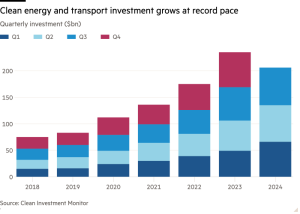Marburg outbreak in Rwanda shows some post-pandemic progress
Unlock the Editor’s Digest for free
Roula Khalaf, Editor of the FT, selects her favourite stories in this weekly newsletter.
The writer is a science commentator
The 31 patients had one thing in common: they had all reported contact with African green monkeys previously imported from Uganda. Some were laboratory staff using the animals’ tissue to grow live polio vaccine.
Initially, they complained of fever, headaches and muscle pains. Some worsened, suffering vomiting and diarrhoea. For an ill-fated few, that was followed by organ failure and death. Two of the 1967 outbreaks happened in Frankfurt and Belgrade but it was the third location — Marburg, Germany — that would be forever linked to this new disease.
Marburg virus is not as well-known as the Ebola virus, which has fuelled devastating epidemics in west Africa. But Marburg, with the same grim modus operandi, is neither as rare nor as contained as it used to be. Mostly found in only a handful of countries in sub-Saharan Africa, particularly Uganda, it appeared in Equatorial Guinea and Tanzania for the first time last year. Last month, the deadly virus reached Rwanda.
With 56 confirmed cases as of Monday, most in the capital Kigali, it is the third-largest recorded outbreak. The fear is that it may spread to neighbouring Democratic Republic of Congo, where there are 7mn internally displaced people. But there is hopeful news: Rwanda has procured hundreds of doses of a promising experimental vaccine and the immunisation of health workers and close contacts of confirmed cases has reportedly begun.
Some post-pandemic lessons are clearly being learnt: the importance of continuing research against potential epidemic diseases and the need to put candidate vaccines and treatments through their paces in the heat of an outbreak. Some important details, though, remain undisclosed, including the genetic sequence of the current virus and how it has spread.
Craig Spencer, an emergency doctor at Brown University who has tended Ebola patients (and who himself survived the disease), praised the response on X: “I can’t overemphasize how incredible it is that Rwanda went from announcing Marburg cases just over a week ago to getting frontline providers vaccinated today.” Interestingly, Rwanda’s health minister, Sabin Nsanzimana, is a medical doctor and epidemiologist. As of Monday, according to his department’s posts on X, the 56 confirmed cases included 12 deaths and eight recoveries.
“Outbreaks of [Marburg and Ebola] infections do seem to be becoming more frequent and extending their range,” says Jimmy Whitworth, emeritus professor of epidemiology at the London School of Hygiene and Tropical Medicine, who has worked in outbreak response. People are increasingly encroaching on habitats where bats live, he explains, raising chances of a zoonotic spillover. Given the ease of air and land travel plus an incubation period of about five to 10 days, there is always a risk of spread further afield.
Accordingly, precautions are being stepped up. On Monday, the US Centers for Disease Control and Prevention advised against non-essential travel to Rwanda and from October 14, US travellers returning home will undergo public health screening if they have been to the country during the previous three weeks.
Marburg and Ebola belong to a family of viruses known as filoviruses. Confusingly, Marburg virus disease, as the illness is technically known, can be caused by two slightly different viruses: the eponymous Marburg virus and the closely-related Ravn virus, first identified in 1987.
Like Ebola, Marburg is transmitted to humans and non-human primates by fruit bats; the viruses can then spread person-to-person via close personal contact and bodily fluids. The risk of transmission between strangers is therefore low — but higher for close family members and hospital workers. Symptoms include bleeding from the nose, gums and sometimes eyes, as well as internal haemorrhaging. Unlike for Ebola, there is no licensed vaccine, treatment, or cure.
Last year, a World Health Organization advisory committee identified a Marburg vaccine being developed by the Sabin Vaccine Institute, a non-profit body in Washington, with funding from the US biomedical research agency Barda, as a frontrunner. The institute, which is conducting phase 2 trials in Uganda and Kenya, has now shipped 700 doses to Rwanda. Gilead Sciences is also donating 5,000 doses of remdesivir for emergency use. The antiviral, originally developed to treat Ebola and used to combat Covid, is untested against Marburg.
The Rwandan response looks prompt and well-organised, even as scientists await further information. Time will reveal whether it is enough to turn the tide.
#Marburg #outbreak #Rwanda #shows #postpandemic #progress







